City of the Living Dead, Paura nella città dei morti viventi (1980)
Directed by: Lucio Fulci
Written by: Lucio Fulci
Starring: Carlo De Mejo, Catriona MacColl, Christopher George
HCF may be one of the newest voices on the web for all things Horror and Cult, and while our aim is to bring you our best opinion of all the new and strange that hits the market, we still cannot forget about our old loves, the films that made us want to create the website to spread the word. So, now and again our official critics at the HCF headquarters have an urge to throw aside their new required copies of the week and dust down their old collection and bring them to the fore…. our aim, to make sure that you may have not missed the films that should be stood proud in your collection.
Here we have have the second of our two films which were sometimes considered Video Nasties but were never officially on the list, and a considerably better movie than the first!
HCF REWIND NO.51. CITY OF THE LIVING DEAD AKA PAURA NELLA DIE MORTI VIVENTI [1981]
AVAILABLE ON DVD and Blu Ray
DIRECTED BY: Lucio Fulci
WRITTEN BY: Dardano Sacchetti
STARRING: Catherine MacColl, Christopher George, Carlo De Mejo, Antonella Interlenghi
RUNNING TIME: 96 mins
REVIEWED BY: Dr Lenera, Official HCF Critic
In New York, Mary Woodhouse experiences a traumatic vision during a séance of a priest, Father Thomas, hanging himself in a remote town called Dunwich. She collapses and is mistakenly buried alive but is rescued by journalist Peter Bell. Theresa, the medium who initiated the séance, warns Peter warns Mary and Peter that, according to the ancient book of Enoch, there is a door through which the living dead can enter, a door that has just been opened by Father Thomas dying, and the invasion is due to begin on All Saints Day, just 48 hours away. As Mary and Peter set off to find Dunwich, strange things begin to happen in Dunwich including the shattering of glass, the appearance of rotting corpses, unexplained murders and the ghostly reappearance of Father Thomas, back from the dead……
If you’re a fan of Italian horror, then you will probably place Lucio Fulci third place in your list of the greatest Italian horror film directors, a list that would be headed, of course, by Dario Argento and Mario Bava [in whichever order you wanted them]. Fulci was actually a much more prolific filmmaker than the other two, making films in a wide range of genres before he became typecast somewhat as a horror man, and I wonder if the careless, lazy quality of some of his later films was partly because he had got tired of the genre. After all, he once said, referring to The Shining, that Stanley Kubrick was “too good for horror films”. Still, when he was at his peak in the 70s and the first half of the 80s, he was a very good filmmaker indeed, albeit one, like Mario Bava, who was not appreciated nearly enough in his lifetime. City Of The Living Dead is the second of Fulci’s four ‘zombie’ movies which gained him wide audiences and notoriety throughout the world with their extremely graphic gore, though, out of the four, only Zombie can really be called a ‘zombie’ film; City Of The Living Dead, The Beyond [generally regarded as Fulci’s masterpiece] and House By The Cemetery have their flesh eating corpses in strictly supporting roles.
City Of The Living Dead is usually considered the weakest of the four movies, sandwiched as it is between the pulp fun of Zombie and the surreal delirium of The Beyond, though I would contend that it is still a very striking chiller, extremely atmospheric and at times approaching nightmarish brilliance. It doesn’t make much sense, but it’s not trying to. Reuniting Fulci with Zombie writer Dardano Sacchetti and producer Fabrizio De Angelis, both script and production were rushed, but both writer and director fulfilled their wishes to make a more unusual film than Zombie, a film that was almost non-linear in its construction. It was a major success, especially considering it was made on a very tight budget, and surprisingly was only slightly cut for UK cinemas, with just scene, a drill killing, cut down. The US saw it uncut but retitled Gates Of Hell. Now it is sometimes claimed that City Of The Living Dead was listed as a Video Nasty, but it actually never made the list. The other three Fulci ‘zombie’ chillers were though, so City was often lumped in with them and re-released on video heavily cut, with all the gore missing, though copies of the almost uncut video release floated around for ages, and I remember my joy, as a budding horror fan whose mantra at the time was “the gorier the better”, when I located one in a dodgy Reading second-hand video store!
Even during the early parts of the film, City Of The Living Dead seems like a collection of vaguely linked scenes in search of a plot, or rather a vague hint of a plot an excuse for lots of vaguely linked scenes. Mary sees her vision of the priest hanging himself and a living corpse emerging out of the leaf-filled ground and, after a strange fireball appears and disappears, seemingly dies from shock, which leads to a lengthy section where she is buried alive. Meanwhile in Dunwich glass shatters [and sometimes bleeds]. A wall cracks and either smoke or fog [it’s hard to tell] comes out from it. A cat bites a chunk out of his owner’s psychiatrist. Dead bodies show up and then disappear. A lonely, possibly mentally challenged lad called Bob lives with a rubber doll and the rotting corpse of a baby. Unearthly groans are almost constantly heard, even when nothing is there, and the wind is constantly blowing very hard indeed. Zombies , and sometimes the ghost of the priest, sometimes show up to cause extreme gruesomeness, and these zombies can also teleport and even float. Then again, Dunwich is a really weird place with loads of fog in broad daylight and bizarre geography, including a bar seemingly in the middle of nowhere, yet obviously quite near the row of houses that the camera slowly tracks along, peering in the windows like a character itself.
Yes, I make this movie sound very random, and yet bizarrely everything seems to fit, to have a nightmare logic to it. Fulci said he was trying to make a movie in the manner of Val Lewton [producer of a series of beautifully subtle and haunting chillers in the 1040’s like Cat People], and you may laugh at this when the resulting film is so gory, but there without a doubt a grace and an elegance to parts of the film and even moments of beauty, such as a flower wilting in a grave. Then again, a strong theme of this film seems to be physical disgust, with the zombies looking positively revolting with their pus-oozing, maggot-ridden faces and some truly shocking gore. One scene even has a woman’s face smeared with viscera. Though the actual scenes of violence are quite few, Fulci really shows his love for playing with his audience, daring them to look and see how far he will go, and turning the violence into a kind of surreal art form. Oddly enough the expected gut munching is not shown, but brains are pulled out of the backs of heads, a girl vomits up her guts [which were entrails from a sheep who had just had its throat cut, because after 10 minutes they would start to dry out and become unusable], and the local sheriff pushes Bob’s face into a large drill, a scene in which Fulci devilishly toys with us by stretching out the suspense as the camera cuts closer and closer to the instrument of death. There’s also a terrific shot of a boy frozen in panic as blood drips into a glass of milk on a table, the camera panning up to the ceiling where we see blood and guts starting to leak from the room above, the room where his parents have just been horribly killed. The cinematography gives us some stunning imagery throughout; look out for an amazing iris shot near the beginning.
With other happenings like an attack by maggots, that lengthy early sequence where Mary is buried alive [which climaxes in a bit of audacious black humour as her rescuer’s pick-axe almost smashes into her face], and a climax involving skeletons, City Of The Living Dead is never short of incident, and yet it has a stately pace. It moves leisurely and refuses to ramp the excitement up much for the climax, yet it never loses it’s odd but compelling atmosphere. This is helped by the collection of weird minor characters like a pair of grave diggers who read dirty magazines while on the job and a mortician who likes to steal from dead, not to mention the unforgettable Bob, though another character’s psychiatric issues seems rather forced and suggests another dimension to the movie which is not followed through. Set against this are the very likeable central couple, with Christopher George and Catherine MacColl having a surprising amount of chemistry as they go on their strange adventure and bicker. When Mary she’s she is hungry, Peter says “there’s a lollipop in the glove compartment”, and I wish the film had given us more scenes with these two. Their acting isn’t perfect but I like these people, as thinly written as they may be.
The effects may seem fake-looking to some in these days of CGI but, unless the CGI is near-perfect [which is rare, but does happen occasionally] I would rather see something hand-made that is really there than something created on a computer which patently isn’t. To me it is often CGI that looks fake, but that may be because it is still a relatively new thing in films and I didn’t grow up with it when I was becoming the film fanatic I am today. Fabio Frizzi’s score mostly consists of the same two or three themes replayed, while the most-used theme resembles a creepier variant on Goblin’s Dawn Of The Dead main theme, but the often tranquil melodies help give the movie considerable elegence and and go very well with Sergio Salvati’s graceful camerawork, which always seems on the verge of taking us to something we just don’t want to see. City Of The Living Dead may not quite be Italian horror cinema at its very best, but it is still a fine example of it and would serve as a great introduction to Italy’s amazing contribution to the genre. Audacious, seemingly random but actually very carefully crafted with half- remembered touches of other sources [Phantasm and the work of H.P.Lovecaft to name but two] but also entirely its own film, it may have been made in a hurry, but paradoxically seems to have been very carefully crafted indeed……..except for maybe the confusing ending, which has been a source of debate amongst fans for years!

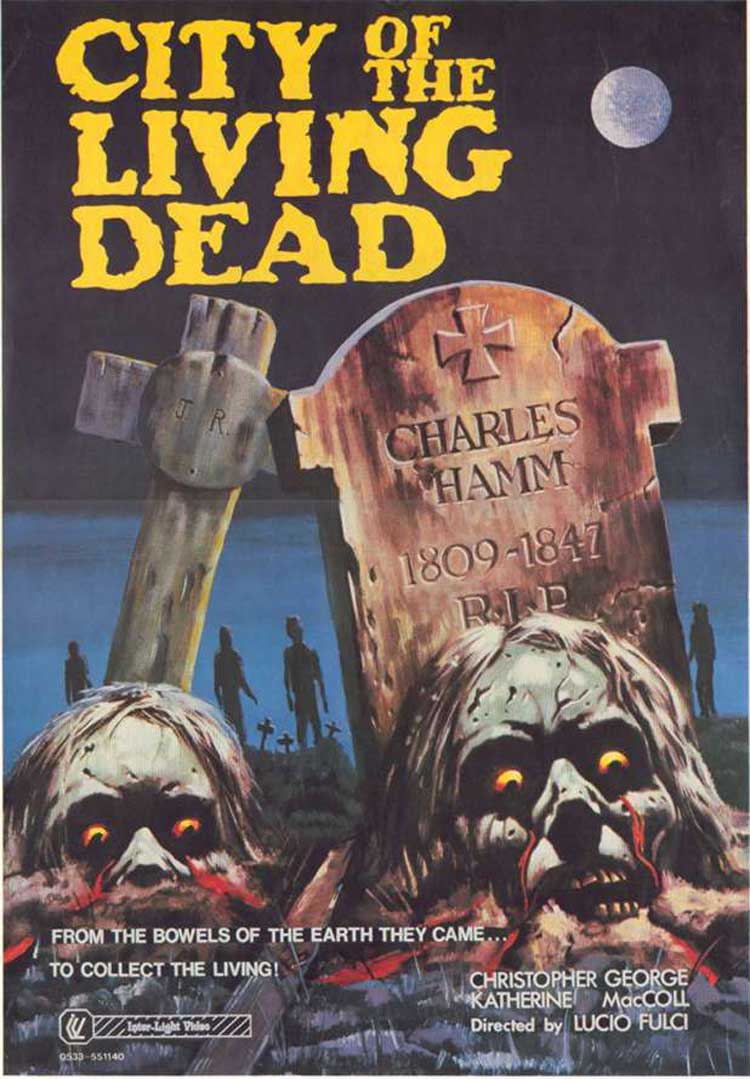
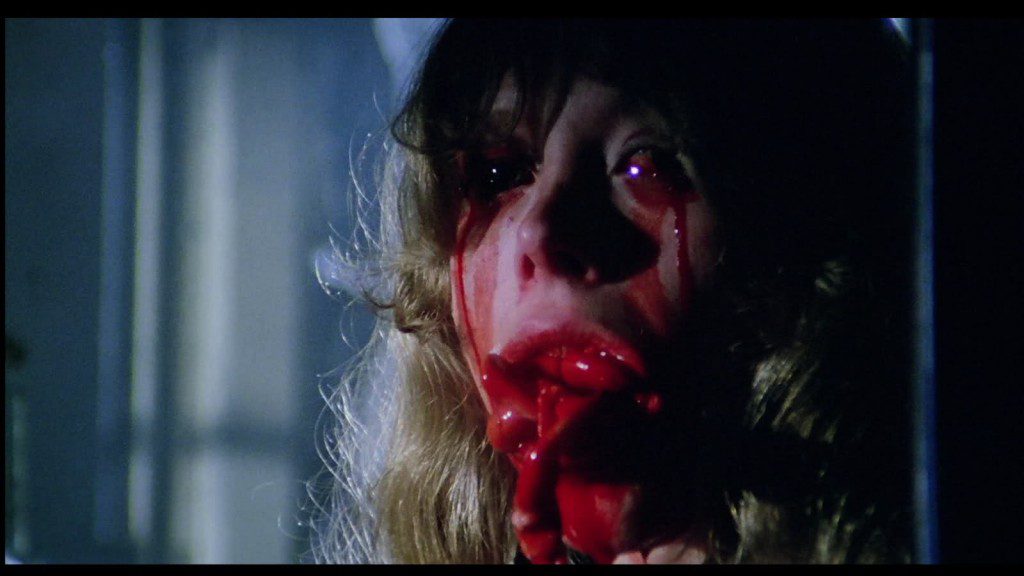
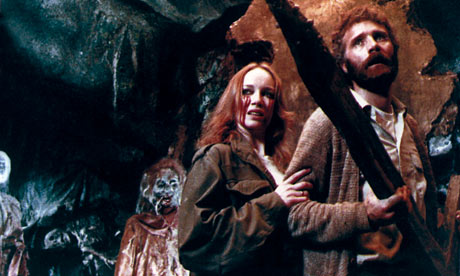



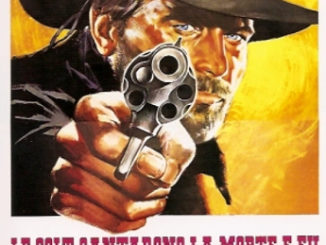
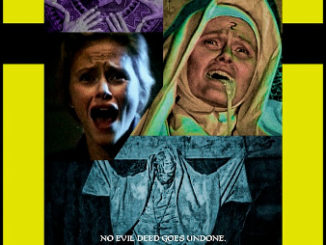
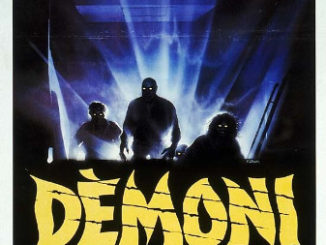
Be the first to comment